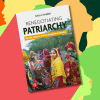The future is female, but so was the past

Women today can vote, own property, leave non-serving marriages, own credit cards (as recently as in 1971, women couldn't own credit cards in the US), and run for presidential offices. It seems we are evidently moving away from the shackles of patriarchy and gradually, but assuredly, moving towards universal progress for all women.
But what if one argues that women in indigenous, prehistoric, and precolonial societies, across all continents, were in positions of power and privilege?
Were societies always assembled in ways where men held positions of economic and political privilege? Historical records and contemporary practice show that Native American women, before the arrival of European colonists, had more rights, respect, and power than women in the US today. In the Haudenosaunee Confederacy (an alliance of six Native American nations), women enjoyed far more privileged positions compared to their Caucasian counterparts. Clan matriarchs had the power to choose, remove or keep male chiefs in political positions. In the beginning of the 18th century, when White women in the US were still fighting for voting rights, many of their Native American counterparts were enjoying full political participation in their governments. In fact, many early US suffragettes were inspired to fight for more rights when they came in close contact with Native American women and witnessed their elevated positions in their own societies.
Colonial powers not only extracted resources and labour for their consumption and commerce, but also forcibly pushed their conceptions of gender and gender roles on more egalitarian worldviews and pluralistic systems. Contrary to the narrative they peddle regarding their contributions to female emancipation, European colonists brought with themselves extractive practices and narrow gender-role conceptions.
Gender relations in some parts of precolonial Africa were also more equitable, with men and women enjoying differentiated roles yet equal degrees of social power. Gender equity was a feature of many large, prominent African tribes where it was the elderly matriarchs who were at the centre of the clans. In precolonial India, matrilineal family and land ownership structures abounded. From Kerala in the south to Meghalaya in northeast, women in India were heads of clans and households, and property ownership was passed down from the mother to daughters. In Bhutan today, matrilocality (living with or near the wife's home after marriage) and matrilineality (passage of land inheritance from mother to daughter) continue being widely practised.
Latest anthropological research has also shattered the popular trope of men being hunters and women being gatherers. A 2023 research article titled "The Myth of Man the Hunter: Women's contribution to the hunt across ethnographic contexts" provided archaeological evidence showing that women habitually used specialised tools and weapons to hunt big and small animals, and were often buried with their revered hunting tools. In Bangladesh, the Garo and Khasi communities continue to be predominantly matrilineal, with children taking the names of their mothers, and land being passed down from mothers to eldest daughters. This is not to say that in these societies females dominate the male members, but rather both male and female members assume distinct positions of power and privilege, which is more egalitarian.
It is a fallacy to assume that women's lives have become better with time and that women must be content with their seemingly enhanced rights and responsibilities. The phrase "the future is female," which originated during Hillary Clinton's US presidential bid, has become a rallying cry among feminists to realise a world where leadership positions will be shared by more women. However, going by facts, it can be argued that our past, too, was female. Instead of looking at women's rights as justices that are progressively being achieved, one can also look at rights gained now as rights recovered from the past centuries of colonial and capitalist subjugation.
It becomes easier to envision a "female future" once it is known that the past was also female. A more egalitarian society is not only possible but was the norm across almost all geographical regions. To confront the patriarchal forces stopping women driving cars or taking full ownership of their bodies, there is a need to demonstrate that there was a world once where women enjoyed more rights in all spheres of society. To challenge colonial narratives of women's status being improved since feudalism, one must point towards non-Eurocentric, pre-colonial societies where women enjoyed better lives. Women's equal participation in society is not an anomaly or a modern, Western conception, but a worldview and practice experienced for centuries across thousands of cultures.
Colonial powers not only extracted resources and labour for their consumption and commerce, but also forcibly pushed their conceptions of gender and gender roles on more egalitarian worldviews and pluralistic systems. Contrary to the narrative they peddle regarding their contributions to female emancipation, European colonists brought with themselves extractive practices and narrow gender-role conceptions. The powerful and egalitarian lives of women in pre-colonial and even prehistoric Asia, Africa, Americas, and Australia could be potent motivations to pursue more rights for women and to take stand against a patriarchal system that is increasingly being recognised as a recent Euro-Asian invention.
Avia Nahreen is a PhD student at Syracuse University, US. Her areas of focus include feminist geography, post-colonial urbanism, and political ecology.
Views expressed in this article are the author's own.
Follow The Daily Star Opinion on Facebook for the latest opinions, commentaries and analyses by experts and professionals. To contribute your article or letter to The Daily Star Opinion, see our guidelines for submission.

 For all latest news, follow The Daily Star's Google News channel.
For all latest news, follow The Daily Star's Google News channel. 










Comments